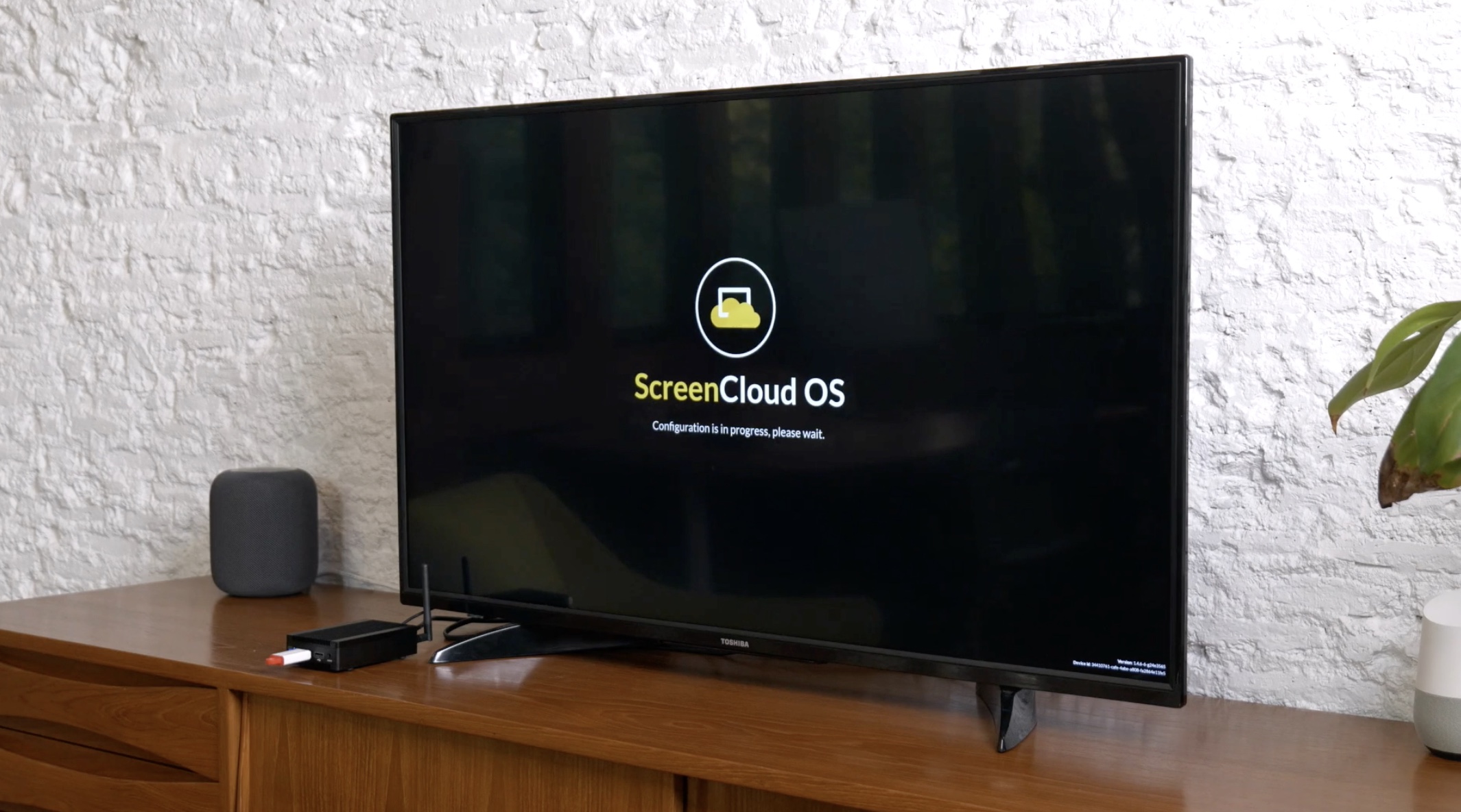
ScreenCloud Announces New Purpose-Built Operating System And Sub-$200 Digital Signage Playout Device
October 4, 2021 by Dave Haynes
The UK-based digital signage CMS firm ScreenCloud has taken the interesting step of putting two years of R&D time and money into developing a purpose-built operating system for its playout software and a new, low-cost device.
The company has launched ScreenCloud OS – a custom linux distribution it says is designed for high performance, simple setup, enterprise network compatibility and security. Coding and hardware work started two years ago and the software and hardware output has been beta testing through 2021 with some larger ScreenCloud customers.
ScreenCloud was known from its launch for having a solution that could run on a wide range of lower cost consumer devices, like Amazon Firesticks. This new product is the first time ScreenCloud will be selling its own device – a Station P1 that has six-core, 64-bit ARM processor, 4GB RAM, 32GB storage and comes in a fanless aluminum alloy case, with the OS pre-installed. It sells for under $200 USD ($175 to end of year).
“After two years of R&D, we are so excited to launch ScreenCloud OS – our stripped back, high performance, secure operating system for enterprise digital signage,” says Mark McDermott, ScreenCloud CEO. “It is simple and fast to set up, and opens up a world of possibilities for remote device management and deployment via the cloud. Our launch device, the Station P1, is robust and feature rich – supporting most signage use cases. We are extremely proud of the product team that has brought this to market and excited to get this into the hands of our customers. And, there is plenty more to come for ScreenCloud OS.”
The press announcements calls out several key features and benefits:
Performance: ScreenCloud OS runs up to 4x faster than the Amazon Fire TV Stick. It’s powered by a Station P1 system-on-chip device that’s equipped with a 6-Core 64-Bit CPU and 4-Core GPU, and 4GB of LPDDR4 RAM. It also has 32GB of eMMC flash storage to play your content even if your internet connection becomes unstable.
Security: Secure by design, ScreenCloud has a locked down OS design, in-built logs and reporting, plus support for secure network configurations like enterprise networks, proxies, custom root CAs and more.
Ease of use: As a purpose-built tool, ScreenCloud OS has been designed for a quick set up, allowing customers to scale with ease, saving both time and money.
ScreenCloud says it powers the digital signage networks of some 8,500 organizations around the world. It started in London and also has offices in Belfast, LA and Bangkok.
This is an interesting step for ScreenCloud, which started in the SMB market but has shifted much more up-market to chasing enterprise-level business. It also started with something that could run on damn near anything to a dedicated device. The supported hardware page on the ScreenCloud website kinda scrolls on and on with options. I assume hardware margin is NOT a driver behind this, with the big attractions being able to focus on one device instead of trying to stay on top of many (that may go through different builds and have their own quirks) and controlling the characteristics of the operating system.
Having your own OS is rare, but not entirely new to the digital signage market. Both SpinetiX and BrightSign have long had dedicated operating systems for their little media player boxes, and the Swiss firm SpinetiX last year announced and released its own lean, optimized “Digital Signage Operating System” (DSOS), to run on a SpinetiX box, but also on hardware built with the Intel NUC reference design.
I had not heard of the Station P1 before, but now know it comes out of the Shenzhen-Guanzhou mega-cities area of China, from a company called Firefly. It is a micro PC thyat could be likened to a Raspberry Pi, except this is a finished unit whereas the Pis are mainlu sold as boards that are then consolidated into finished units with cases, power supplies and so on.



Leave a comment